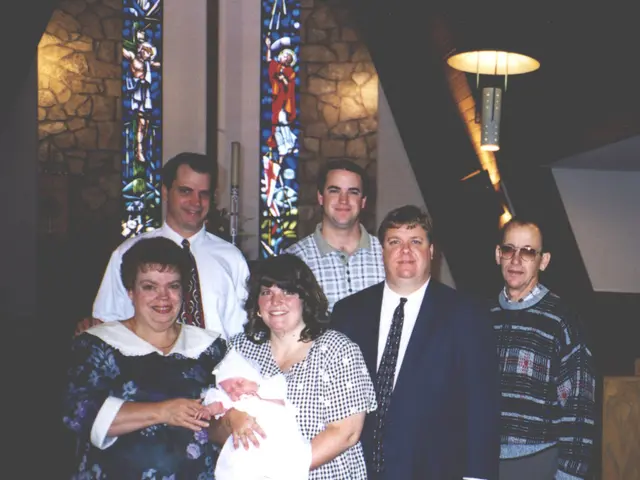Embracing the Chaos: Life with Dissociative Identity Disorder in the Digital Age
Pondering for extended periods about whether my life's unfolding in ambiguity could've possibly been less complex - grappling with the supposition that a more resolved life path might have alleviated my struggles
In today's world, who hasn't heard the whispers of their subconscious, the conflicting voices that creeps up right before major decisions? But what if those voices turned into separate beings within you? That's when we're talking about Dissociative Identity Disorder. Here's a glimpse into the lives of those who embody many.
The 'Bonnies' - a group of individuals grappling with DID - have made a splash online, sharing their experiences on Social Media. They're still figuring out how many of them reside within, as new identities continue to emerge. But when you interact with a few of them, it becomes evident - there are indeed different individuals coexisting in a single being.*
As we dive into the consciousness of four 'Bonnies', today we introduce you to Isa.*
Understanding the Maze
- Identity Disorder
- Social Media
- DID
- Digital Era
- Mental Health
The Interwoven Online Existence
For those with DID, the digital realm offers a unique blend of challenges and opportunities:
- Multiple Personality Presentation: Social media allows individuals with DID to present different facets of their identities, using separate accounts or intermingling personas within the same account. This approach may lead to confusion among followers, but it also opens a door for educating others about DID.
- Online Support: Social media provides a helpful platform for individuals with DID to connect with others who share similar experiences, creating a supportive community where they can share, learn, and grow.*
- Stigma and Misconceptions: Despite efforts to promote understanding, DID is often shrouded in misunderstanding and sensationalism, amplifying stigma for those affected. Social media can both exacerbate this prejudice and present opportunities to challenge common misconceptions.
- Mental Health Struggles: Crafting multiple identities and navigating the intricacies of online interactions can take a toll on mental health. Social media pressure can also trigger feelings of dissociation, as individuals struggle to maintain a consistent online persona amidst shifting identities.*
No two cases are alike, so the experiences of 'The Bonnies' may take different forms. For example, fragmented discussions on TikTok might reveal instances of dissociation during interactions or sudden identity shifts.*
Navigating Treatment
Treatment for DID typically involves psychotherapy, often trauma-focused cognitive-behavioral therapy. Understanding and managing DID in the digital age requires thoughtful consideration of the unique challenges the online world presents and the potential impact on mental wellbeing.*
- The community policy for social media platforms could include guidelines for people with Dissociative Identity Disorder (DID), allowing them to present multiple personalities without confusing followers, while providing an opportunity to educate others about the disorder.
- The employment policy in mental health and wellness organizations should consider accommodating people with DID, providing them with a supportive workspace and opportunities to share their experiences, thus reducing the isolation that often comes with the condition.
- As science continues to delve into the depths of human personality, researchers should consider potential advancements in understanding and treating DID, taking into account the challenges and opportunities presented by the digital era.
- Health-and-wellness platforms could create a safe space for people with DID to engage in discussions about their experiences, offering resources, support, and guidance for managing mental health issues that may be exacerbated by the pressure to maintain an online presence.
- Personalities such as 'Bonnies,' who have DID and are active on social media, can be powerful influencers in raising awareness about mental health and dispelling common misconceptions through their blog posts, vlogs, or other content, potentially making it easier for others to understand and accept those living with this condition.








